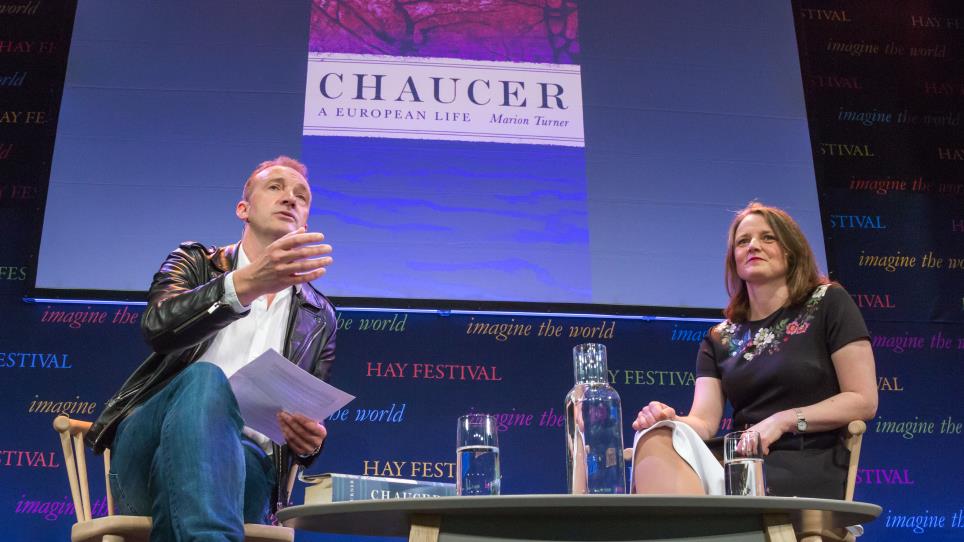
Turner, Chaucer’s first female biographer, takes a fresh look at the iconic English writer in her book, Chaucer: A European Life. She explained that she has structured her book around “places and spaces” and includes a plethora of stories from his diverse and varied life.
The Oxford professor delighted the audience with tales of how Chaucer was taken prisoner in France, how he rode across the Pyrenees and even became an unlikely fashion icon in his teens.
Turner said scholars have been aware that Chaucer had worn a “paltok” for years but that she was the first who considered what a “paltok” might be. She described it as a “very tight and scandalously short tunic” that has been blamed for being so outrageous that many believed that “God sent the Plague to England to punish them” for wearing the offending item.
A far cry from the “stuffy, patriarchal, old guy” image most people associate with Chaucer, Turner suggested an alternative version of an “avuncular man who goes to the pub and tells slightly risqué stories, like those in the Canterbury Tales…stories of sex in a tree and farting out of a window”.
Turner also touched upon the alleged accusation of “raptus” or rape by “Cecily Chaumpaigne” against Chaucer. Turner said Ms Chaumpaigne “took back the accusation because he paid her…but no one really knows what happened”.
Turner also said she is the first to consider in any detail the main females in Chaucer’s life, in particular his daughter, Elizabeth. Turner visited his daughter’s nunnery, where she found records of complaints of “too much dancing and revelling”. She said it’s “not to say they weren’t devout and religious but there is evidence that these women owned land and even brothels and collected the rent”. She said it is thought that women often went to nunneries as they offered more “intellectual freedom”.
If you are interested in more talks like this please also see Event 125 at 10am on Monday 27 May.
If you like watching Hay Festival events digitally please sign up to the Hay Player for more from the world’s greatest thinkers.
Picture by Matthew Harry
Chaired by Jerry Brotton (left)